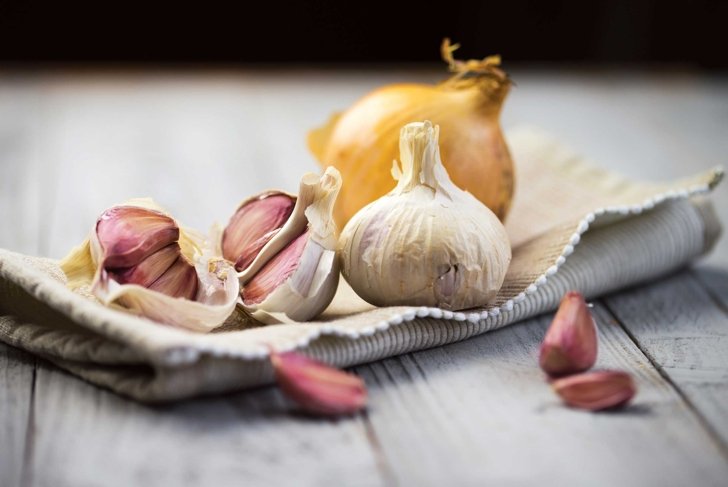
Aromatics are the distinct vegetables, spices, and fat cooked together to form a flavour base for a variety of regional cuisines all over the world. Hop on board for a food lover’s taste tour in your own kitchen!
How often have you entered a home or restaurant and been embraced by distinctive aromas emanating from the kitchen? Right away you can pretty much guess the origin of what’s being served: Italian, Chinese, Mexican, or Indian. But what makes a dish really special and unique?
It’s all about aromatics—a unique but simple combination of ingredients basic to all recipes. Every country’s famous dishes begin with a flavour base of three vegetables. These are enhanced with specific spices that create a particular region’s aromatics.
Learning how to use aromatics is so easy. Warm the fat. Sauté three basic vegetables, and season with a few herbs or spices. For simple suggestions to distinguish your dishes, check out our sidebar, “A Quick Guide to Regional Flavours.”
Given the wonderful international melting pot of our society, we’re fusing aromatics together in ways that are influencing our food habits in wonderfully appetizing ways.
Regional flavour bases
France
Many French dishes start with a base that is 2 parts diced onions to 1 part diced celery and carrots, otherwise known as a mirepoix. It’s seasoned with herbs such as tarragon or herbes de Provence. Gently sautéed, the richness of this caramelized trio is the basis of many great stews, soups, and bakes.
Mexico
Mexican dishes begin with onion, celery, and most often garlic, to which is added lime, smoked peppers, ginger, cumin, and coriander.
Japan
Japanese cuisine might start with garlic, ginger, and green onions, which is then seasoned with hot chilies, wasabi, and fermented bean sauces.
India
In India, a typical dish will begin with sautéed onions, garlic, and ginger root seasoned with hand-ground spices such as curry powder or cumin.
Oil or fat
Aromatics are cooked in an oil or fat available in their region. Whether coconut or olive oil, butter or ghee is used, it creates a deep flavour for many soups, stews, sauces, and more.
Recipes
- Aromatic Mexican Salad
- Eggs En Cocotte
- Tuscan Bean Salad
- Soy Miso Glazed Salmon with Daikon Salsa
- Moroccan Chicken Tagine
- Red Lentil Dal
A quick guide to regional flavours
Different regions have their own classic flavour bases. This chart features a few countries’ unique aromatic approaches to whet your culinary creativity.
| Choose 3 vegetables | Add herbs and spices | Blend with fat or oil | |
| France | onions, carrots, celery, shallots, leeks, garlic | herbes de Provence (rosemary, thyme, oregano, lavender), tarragon, parsley, bay leaves, sea salt | butter, sunflower oil, grapeseed oil |
| Mexico | onions, peppers, celery, garlic, lime, dried or smoked chilies | cilantro, oregano, sea salt, cumin | sunflower oil, olive oil |
| India | onions, garlic, ginger root, tomatoes, pulses | cumin, mustard seed, coriander seed, anise, fenugreek, garam masala, turmeric, cardamom, cilantro | ghee, sunflower oil |
| Italy | onions, carrots, celery, garlic, fennel | bay leaves, parsley, sage, oregano, basil | olive oil |
| Morocco | onions, garlic, tomatoes, green onions, raisins, ginger root, lemon | saffron, turmeric, cinnamon, dried chilies, paprika, cumin seeds | olive oil, clarified butter |
| Japan | garlic, ginger, green onions, citrus, bird’s eye chilies, fermented bean sauces | togarashi, wasabi, shiso, sansho | sesame, peanut, olive, and sunflower oil |
| Thailand | shallots, garlic, Thai chilies | galangal, lemon grass, lime | peanut oil, coconut oil, coconut milk |
Cooking onions
While sweating onions may sound like they’ve been working out too hard, here’s what sweating and sautéing are all about.
Sweating
What is it?
Sweating is the process of releasing flavours with moisture and low temperatures. Fat, in this case, is used just to hold the non-volatile flavours as they’re released from the onion. No browning takes place.
How do you do it?
Cover the pan so the lid traps steam, which condenses and drips back onto the onions. Some cooks cover the onions directly with a piece of parchment paper, then cover with a lid as well.
Why do it?
The cooked onions have a more mellow flavour with this technique. The more you cook an onion, the sweeter it gets. Sweating onions is especially desirable when making white sauces that contain onions, as no colour is added to the sauce. This technique is also used when making risottos.
Sautéing
What is it?
Sautéing adds deeper flavours and richer colours to onions.
How do you do it?
Use a small amount of fat, and cook the onions in an uncovered pan. As fat reaches higher temperatures than water, cooking usually occurs quickly, and you can easily see the onions become translucent as they move from raw to cooked. Some fat is also absorbed by the onion. This basic technique is a more common way to cook onions.
Why do it?
Sautéing allows complex flavours and aromas to develop, so it’s a classic technique used when cooking aromatics.
See how it\’s done
- www.alive.com/food/sauteing-onions/
- www.alive.com/food/sweating-onions/
Veggie prep
Mincing or dicing? Which method produces the best results? It depends on the dish. In a French mirepoix, the smaller the mince, the more exacting the flavour. So what is the difference between a dice and a mince?
Mincing
Mincing means to chop in very small pieces, as when you mince garlic.
Dicing
When dicing vegetables, a small dice is 1/4 in (0.6 cm), a medium dice measures 1/2 in (1.25 cm), and a large dice is about 3/4 in (2 cm).










